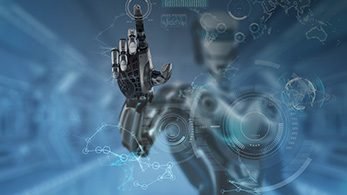The public and private sectors are increasingly turning to machine learning (ML) algorithms and artificial intelligence (AI) systems to automate every decision-making process, and financial institutions are no exception.
In addition to widespread use in the capital markets, artificial intelligence and machine learning are used in financial services to make insurance decisions, monitor user behavior, recruitments, fraud detection, credit referencing, and underwriting loans.
However, while AI and ML have brought innumerable benefits to financial institutions, they also have their share of woes in the form of data biases and transparency issues. The question is, how are financial institutions dealing with these problems?
Bias and Transparency in the AI Context
AI systems are powered by algorithms that “train” by reviewing massive datasets to ultimately identify patterns and make decisions based on the observations. Hence, these systems are no better than the fed data, resulting in unconscious data biases.
On the contrary, transparency in the context of AI refers to the ability to explain AI-based decisions. Given the increasingly complex findings and algorithms, ensuring transparency to different stakeholders is vital in the financial sector, both from compliance and business value perspectives.
Biases can occur in many ways. For example, bias due to incomplete data occurs when the AI system has been trained on data that is not representative of the population.
Likewise, the dataset could be biased towards previous decision-making processes, the programmer may introduce their own bias into codes, or business policies pertaining to AI decisions could be biased themselves. The bias of any form eventually leads to unfairness and inequities in financial services.
Dealing With AI Bias and Transparency
Although the use of AI and ML give rise to data bias and transparency issues, they have become indispensable for the functioning of financial services. So, the only course of action left to financial institutions is to adopt ways to get around the problems. Some of them are listed below:
- Financial institutions and firms can have appropriate controls and monitoring tools to ensure that new data entering the pool is reliable and of high quality.
- In addition, some organizations have developed tools to determine if a potential AI solution is biased.
- When building AI systems, it is wise to gather a team with domain expertise, model development skills, data engineering capabilities, and commercial expertise.
- Organizations can undertake impact assessments of the AI solutions to ensure they are transparent and explainable, as well as determine how the AI-based decision-making process will impact customers.
- When engaging with AI technologies, financial services can apply safeguards to ensure that business outcomes are achieved, and customers’ interests are protected.
- Another way to minimize data biases is to be open on the user data, match and align data with the target segment, and set up review cycles with legal and statistical experts.
- Tracking mechanisms that allow one to track the decision-making mechanism of algorithms can be put in place to eliminate bias and ensure transparency as much as possible.
- Lastly, it is pertinent for institutions to document their approach to handling bias and review it after every stage of development and use of the algorithm.
What to Look for in an Artificial Intelligence Course?
If you want to learn AI and ML, there are several online courses you can choose from. An AI and ML certification course that makes you future-ready will have a robust curriculum covering critical concepts related to data science, machine learning, NLP, deep learning, and computer vision.
In addition, the program should offer in-depth experiential learning through hands-on involvement with real-world projects.





 AI is applicable in every conceivable field & recent advancements are increasing the relevance of AI in every sphere. Here are the top applications of AI:
AI is applicable in every conceivable field & recent advancements are increasing the relevance of AI in every sphere. Here are the top applications of AI: